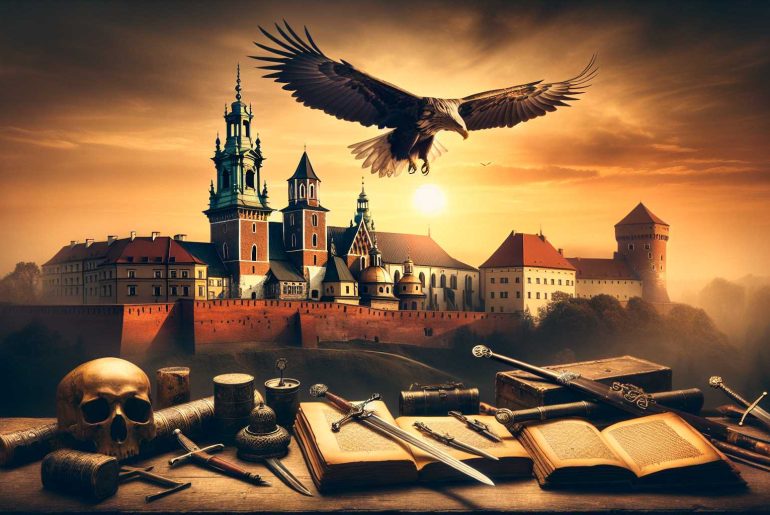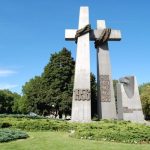
Poland has a fascinating history that stretches back centuries, filled with both incredible achievements and difficult challenges. It’s a history that shows the resilience and spirit of the Polish people. Let’s start with the Polish-Lithuanian Commonwealth. This was a time when Poland was known for being a place of democracy and tolerance, quite ahead of its time. However, this golden age came to an end when Poland was partitioned by its neighbors and disappeared from the map of Europe.
Fast forward to the 20th century, and Poland faced even more hardships with the impact of two world wars. Yet, it’s also during this time that the Solidarity movement began, a significant push towards independence and freedom. This movement played a key role in Poland overcoming communism, leading to the establishment of the Third Polish Republic.
Each part of Poland’s history, from its highs to its lows, has played a role in shaping not just the country, but also the European landscape as we know it today. It’s a testament to the unbreakable spirit of the Polish people and a reminder of how the past can influence the present and future.
The Polish-Lithuanian Commonwealth
The Polish-Lithuanian Commonwealth came to life in 1569 with the Union of Lublin, creating a vast state in Central and Eastern Europe. Unlike many of its time, it had an elective monarchy and was known for allowing religious freedom. Its political system was innovative, featuring something called the Liberum Veto. This was a rule in their parliament, the Sejm, letting any member stop a session and cancel any laws that had been approved. While this aimed to ensure everyone agreed on laws, it often led to disagreements and slowed down decision-making.
One of the Commonwealth’s standout features was its approach to religious tolerance, highlighted by the Warsaw Confederation in 1573. This made it a safe haven for people escaping religious persecution, contributing to a society rich in diversity. This tolerance set the Commonwealth apart from other European nations of the era, which were often less accepting of religious differences.
In essence, the Polish-Lithuanian Commonwealth was a pioneering state with a political system designed to prevent tyranny and promote consensus. However, the very mechanisms intended to protect its democracy, like the Liberum Veto, also made it vulnerable to paralysis and conflict. At the same time, its commitment to religious freedom created a vibrant and diverse society, showcasing a level of progressiveness rare for its time.
The Partitions of Poland
The Polish-Lithuanian Commonwealth was known for its unique political system and a culture of religious freedom. However, its internal challenges and the pressure from neighboring countries led to its downfall through a series of events known as the Partitions of Poland. In 1772, 1793, and 1795, the nations of Prussia, Russia, and Austria took advantage of Poland’s weakened state to annex its territory. The key issue was Poland’s decentralized government, particularly the Liberum Veto, which allowed any member of the parliament to halt decisions, making the country vulnerable to external influences and internal stalemates. As a result, Poland was completely wiped off the map for 123 years, drastically changing the social, cultural, and political fabric of Central and Eastern Europe and setting the stage for future upheavals and nationalist movements.
The impact of the partitions went beyond redrawing borders. They disrupted communities, mixed populations, and planted the seeds for future conflicts. An example of the long-term effects can be seen in the 20th century, where disputes over territories with mixed ethnicities led to tensions between the new nations of Europe.
In a way, the story of the Partitions of Poland serves as a cautionary tale about the dangers of political fragmentation and the importance of a unified national defense. For modern readers, it underscores the value of safeguarding sovereignty and the risks posed by internal divisions and external aggression. In discussions about safeguarding modern states against similar fates, the focus often shifts to the importance of strong, adaptable political institutions and the need for vigilance in international diplomacy.
In a conversational sense, think of Poland back then as a team where each player could call off the game at any moment. Not only does it make it hard to play, but it also invites others to take advantage of the situation. And that’s exactly what happened. The story is not just a historical event but a lesson on the importance of unity and strong governance, something that remains relevant in today’s political climate.
Poland in the World Wars
Poland, once divided and controlled by neighboring powers, emerged as a central figure in the major conflicts of the 20th century, particularly the World Wars. During World War I, the importance of Poland’s geographical location became evident as it became a battleground for the warring factions. This conflict set the stage for Poland to reestablish itself as a sovereign nation in 1918, after being partitioned for 123 years.
World War II presented even greater challenges for Poland. It found itself in the crosshairs of Germany’s expansionist policies, with the German invasion in September 1939 signaling the start of the war. Shortly after, the Soviet Union also invaded, adding to the country’s plight. Poland’s strategic position meant it was more than just a battleground; it was a symbol of resistance against tyranny.
Despite suffering significant losses, both in human life and infrastructure, Poland made noteworthy contributions to the Allied cause. The Polish government-in-exile and the Home Army, for instance, were instrumental in gathering intelligence and conducting resistance operations. Such efforts highlight Poland’s unwavering spirit and its crucial role in European geopolitics during these turbulent times.
In a nutshell, Poland’s journey through the World Wars is a testament to its resilience and strategic significance. The nation not only faced immense challenges but also played a key role in the fight against oppression, marking its place in history as a steadfast and courageous nation.
The Solidarity Movement
The Solidarity movement began in the Gdańsk shipyards in 1980 and quickly became a critical point in Poland’s history, aiming for social and political change. Initially starting as a labor union, Solidarity expanded well beyond, attracting millions from across the country to stand against the Communist government. This movement wasn’t just about workers’ rights; it also tapped into Poland’s national and religious identity, bringing together a wide range of people.
Solidarity was clever in its approach to activism. It chose nonviolent resistance, meaningful negotiations, and created an underground network to spread its message. Even when the government imposed martial law in 1981 to crush the movement, Solidarity didn’t back down. Instead, it played a crucial role in ending communist rule in Poland, paving the way for democracy.
Let’s dive deeper into how Solidarity made its mark. By combining the fight for workers’ rights with the broader aspirations of the Polish people, the movement struck a chord that resonated across the entire society. For example, their underground publishing efforts not only kept the spirit of resistance alive during martial law but also kept people informed and engaged.
The resilience of Solidarity, despite the government’s attempts to suppress it, is a testament to the power of collective action and strategic planning. It’s a clear example of how a movement can use nonviolent methods to achieve significant political change. This approach has inspired other movements around the world, showcasing the potential of unity and peaceful resistance in the face of oppression.
The Third Polish Republic
In 1989, Poland began a remarkable journey towards democracy, thanks to the Solidarity movement’s tremendous efforts. This movement led to the creation of the Third Polish Republic, marking a drastic move away from communist rule and towards a system where the people had a say in their nation’s future. The change started with the Round Table Talks, a series of discussions that allowed for a smooth transition of power, showcasing a practical method for changing political landscapes.
Poland then shifted its economy towards a market-based system, which was a big deal. This change meant that Poland was moving away from a government-controlled economy to one where businesses could operate more freely, leading to economic growth and a better connection with the global market. Think of it as Poland opening its doors to the world, inviting investment and innovation, which helped revitalize its economy.
In 1997, Poland took another major step by reforming its constitution. This new constitution set up a semi-presidential democratic government, which was essential for ensuring that democracy took root in Poland. It laid the groundwork for a system where the government could be held accountable, and laws could be made and applied fairly. This era was all about building a strong foundation for democracy, protecting human rights, and actively participating in global affairs.
Poland’s efforts to strengthen its international ties paid off when it joined NATO in 1999 and the European Union in 2004. Joining NATO was like becoming part of a global security team, where Poland could contribute to and benefit from collective defense efforts. Entering the EU opened up even more opportunities, like access to a massive single market, which was great for trade and economic growth.
Throughout this period, Poland’s focus was on ensuring that the shift to democracy was more than just a change in government; it was about creating a society where freedom, justice, and cooperation flourished. By actively seeking to improve its economy, governance, and international relationships, Poland demonstrated that it was committed to securing a prosperous future for its citizens.
Conclusion
Poland’s history really shows how tough and determined its people are. They’ve gone through a lot: from the highs of the Polish-Lithuanian Commonwealth, to being split up by other countries, and then the tough times of two world wars. But they’ve always fought back.
Look at the Solidarity movement – it was a peaceful protest that helped bring about modern-day Poland, the Third Polish Republic. It’s clear Poland has had a big impact, not just in Europe, but all over the world.
This journey of theirs really highlights the strong will of the Polish people.







Comments are closed.